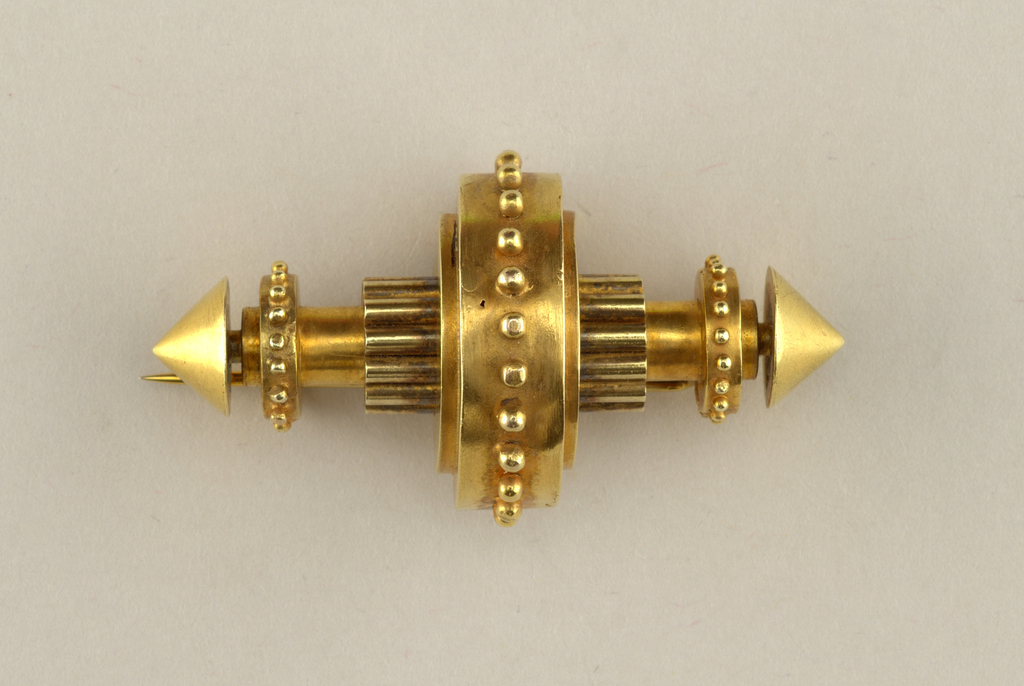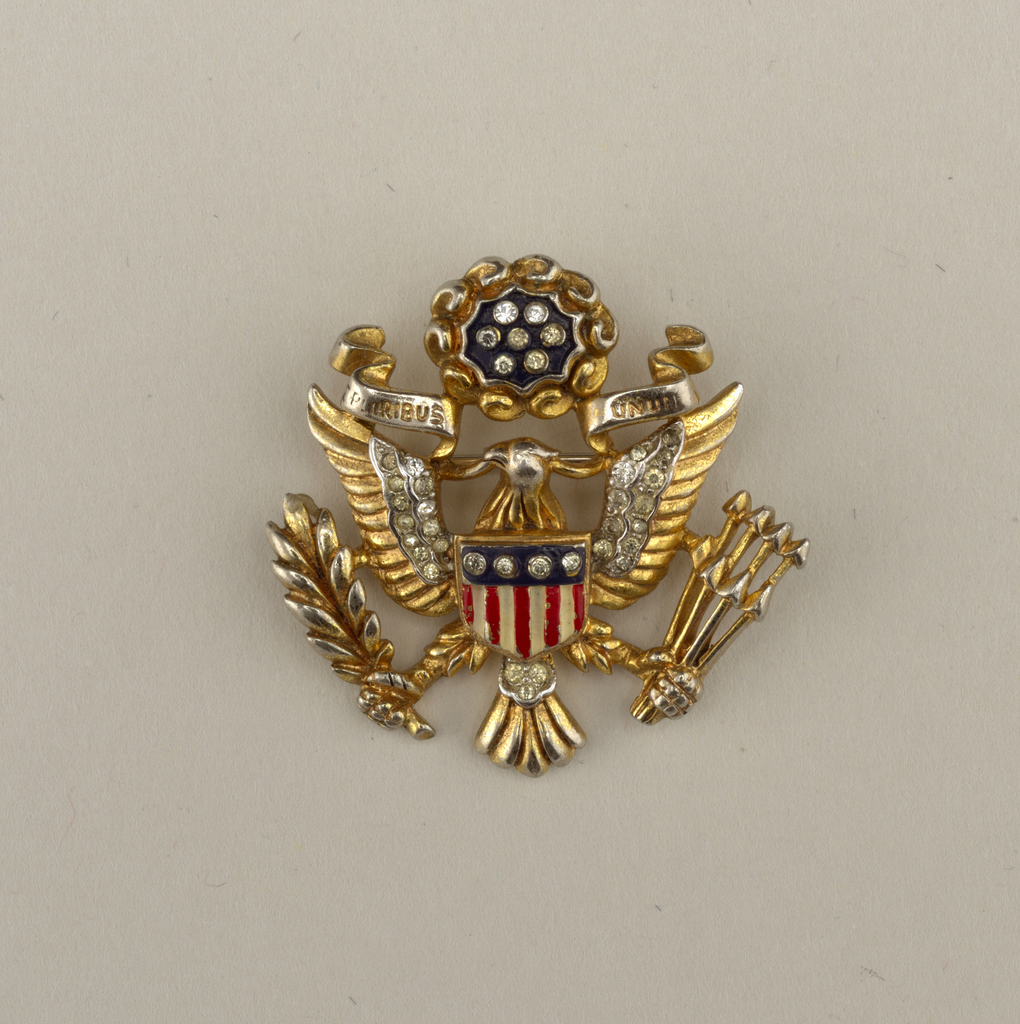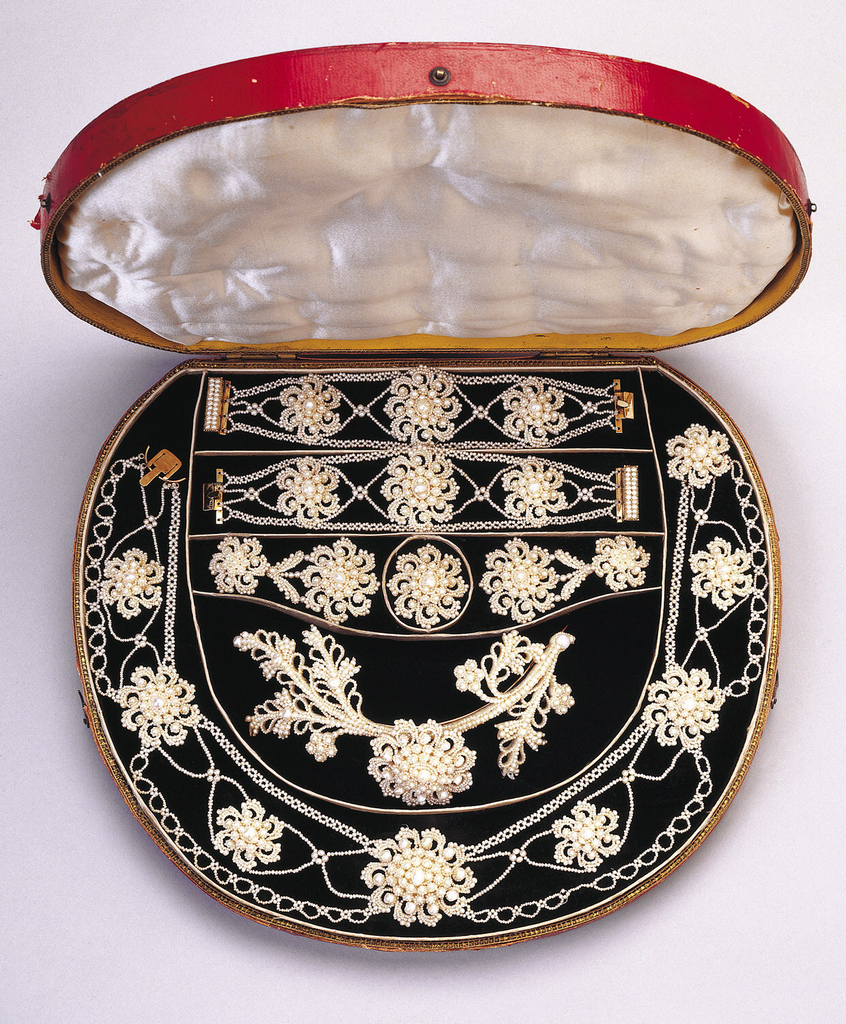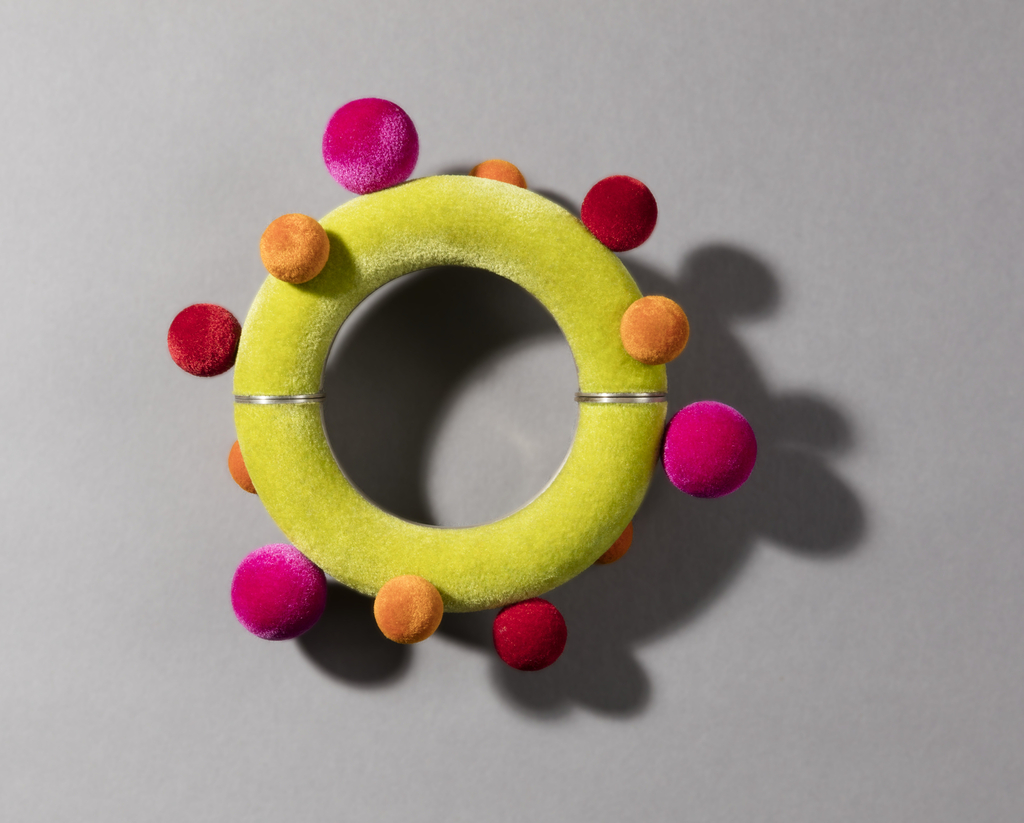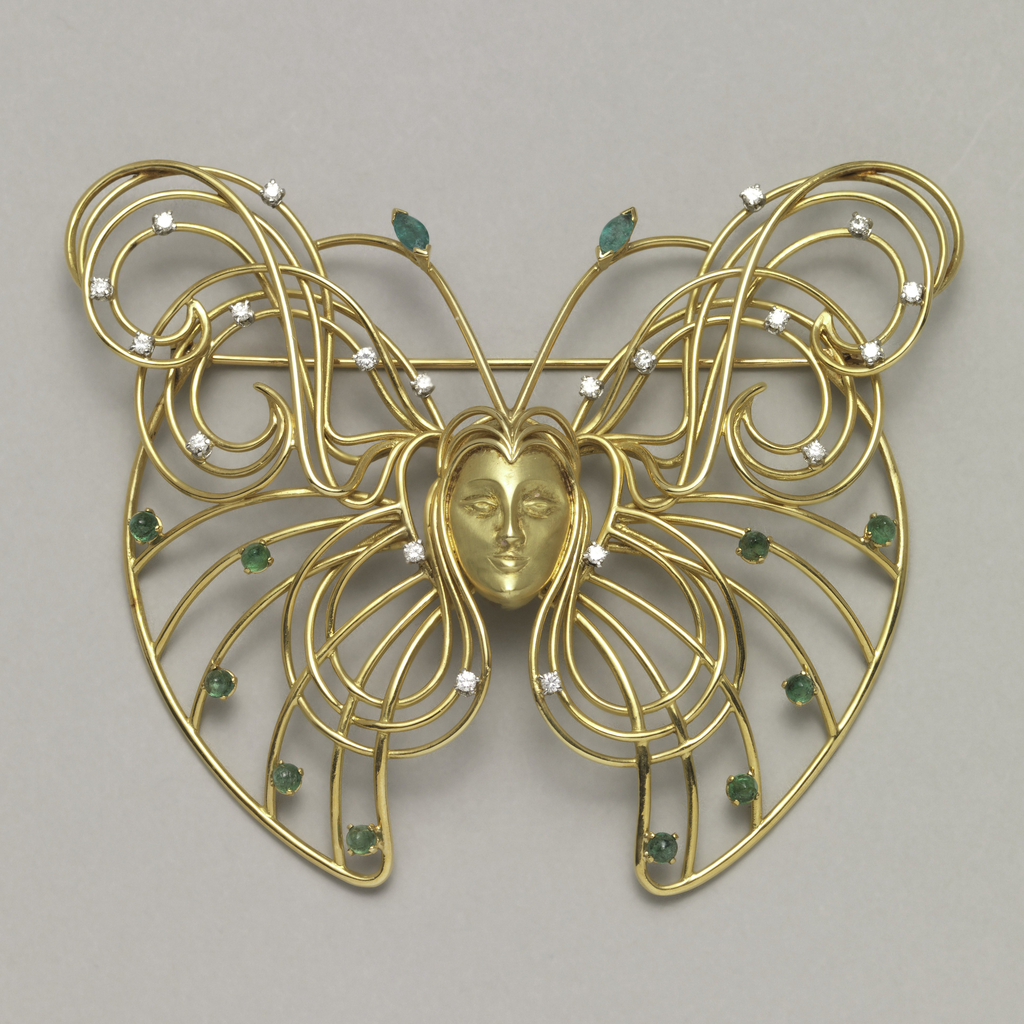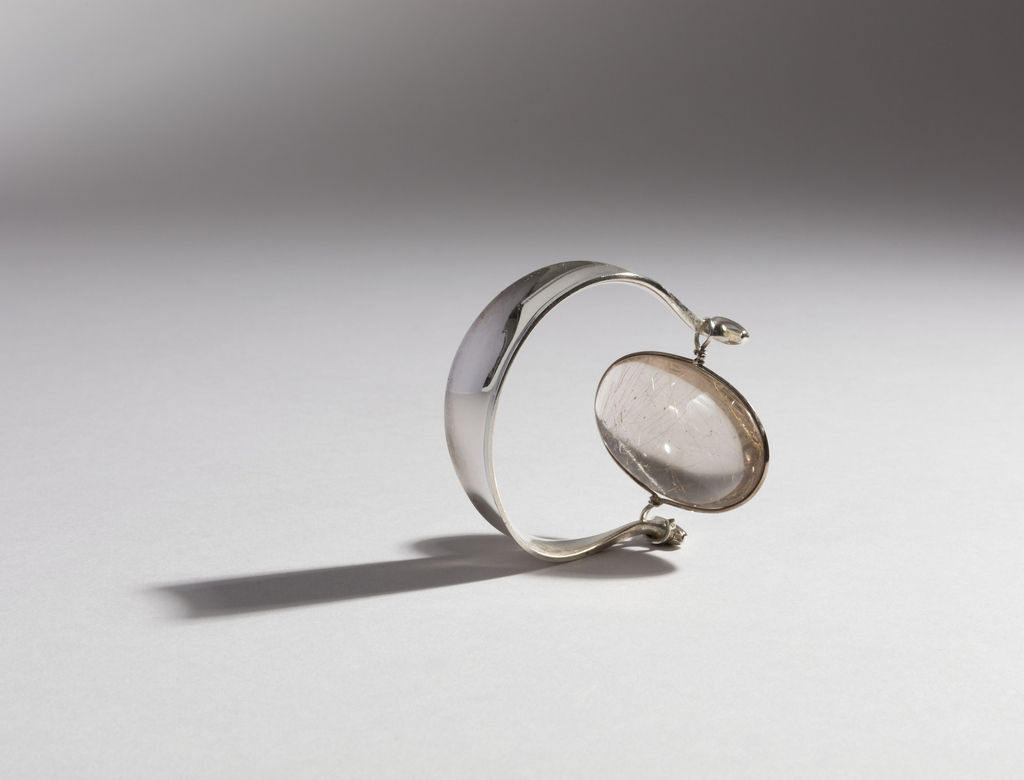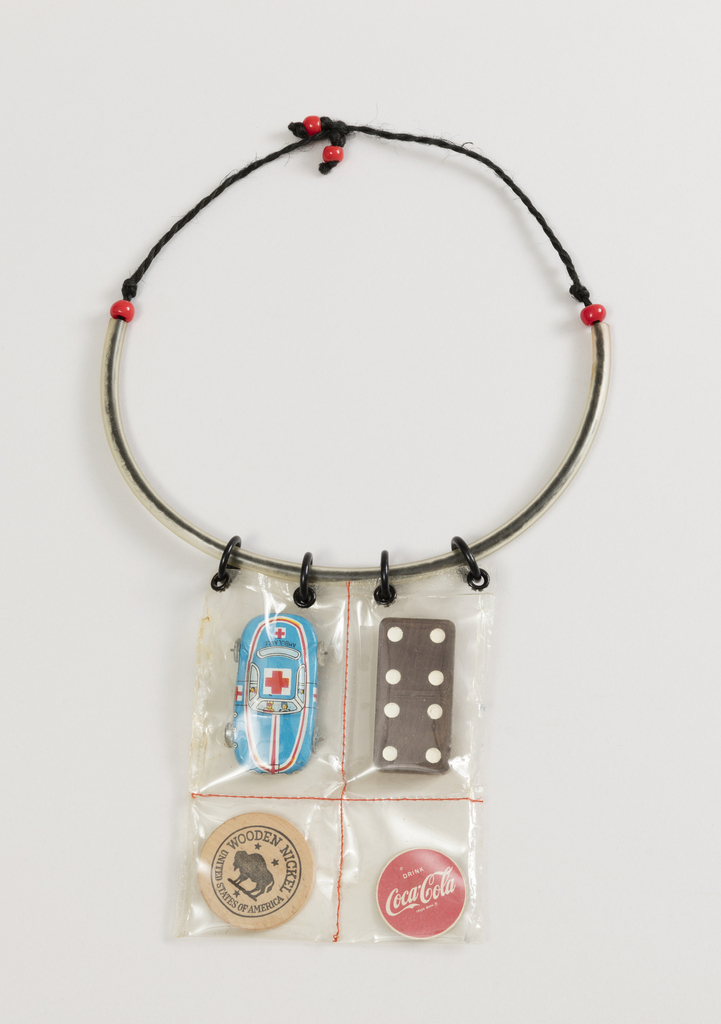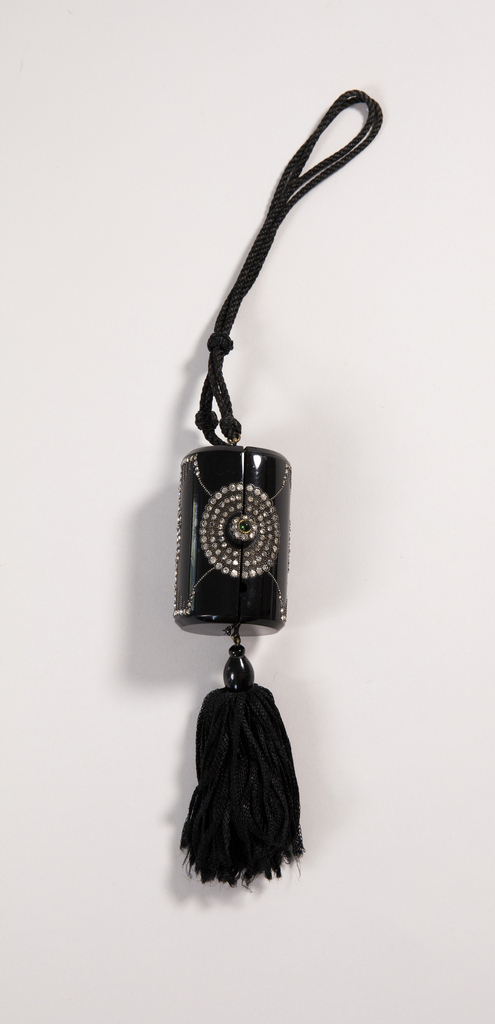This very modern looking gold brooch dates to the 1870s. Its geometric form is comprised of cylindrical elements and tiny rivet-like bosses (round knobs, studs, or other protuberances). The symmetrical structure features a central shaft with two sets of ten small cylinders bundled around the center. Encircling these is a large beaded band at the...
This U.S. insignia brooch by Trifari dates back to 1945, and is made from gilded metal and glass. Wearing a pin designed after the country’s seal was an opportunity for women to express their patriotism, especially in 1945, a time marked by victory in Europe and Japan. This brooch is part of a wider trend...
This set of seed pearl jewelry from the 1830s is referred to as a parure, essentially a matching suite of jewelry comprising interchangle pieces that expand the wearability of the set. A parure has three or more pieces: typically, a necklace, at least one pair of earrings, a brooch, bracelet, and in larger sets, a...
In celebration of The Senses: Design Beyond Vision, this Object of the Day post takes a multisensory approach to an object in Cooper Hewitt’s permanent collection. This whimsical bracelet from Daniel Jocz’s Candy Wear series reminds us that one of the most important aspects of jewelry is the joy it brings to both the wearer...
This brooch, entitled Melusine, was designed by Marie-Claude Lalique and dates to about 1965. Made of thin gold wire, the brooch features the face of a woman whose hair swirls and coils into the wings of a butterfly. The piece is enhanced with a scattering of diamonds and emeralds. The date of 1965 may be...
In celebration of Women’s History Month, March Object of the Day posts highlight women designers in the collection. This cuff-like bracelet with large oval stone clasp was designed by Vivianna Torun Bülow-Hübe in 1968. It is made of silver and rutilated smoky quartz. The bracelet’s simple form is emblematic of Torun’s philosophy that jewelry should...
In celebration of Women’s History Month, March Object of the Day posts highlight women designers in the collection. This necklace was made by Ramona Solberg in the early 1970s. It was in her private collection, and until her death she was its only owner. The pendant is a simple interpretation of reliquary jewelry which usually...
Small and charming, this dance purse epitomizes both radical changes regarding women’s independence as well as the Art Deco style. The 1920s saw a shift in women’s behavior as they gained freedom after attaining the right to vote and the ability to become self-reliant, holding jobs and earning their own income. This freedom saw women...
In last month’s Cooper Hewitt Short Story, we roamed the halls of the Cooper Union Museum for the Arts of Decoration in 1939, exploring past and present methods of collection display. This month, Julie Pastor, curatorial assistant at Cooper Hewitt, lavishes us with drawings of jewelry, many collected by the Hewitt Sisters, from the holdings...
